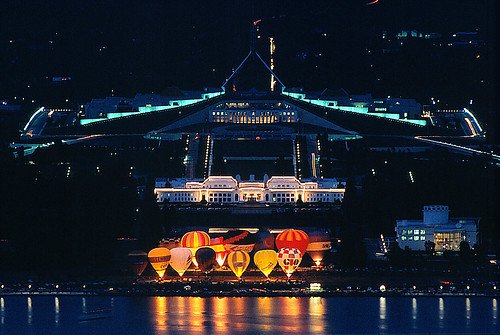Australia's Meeting Place: Canberra
The largest and best known planned city in Australia is its capital: Canberra. Around 1900 Aussies debated whether to put the capital in Sydney or Melbourne, the two largest cities on the continent. Since it was located between the two cities Canberra was picked as a compromise in 1908. Currently it is the largest inland city in Australia.
The name of Canberra comes from the Ngunnawal and Walgalu tribes who inhabited the area. It translates to "meeting place." The nomadic tribes gathered around present-day Canberra to meet the annual Bogong moth migration.
"As the moths migrate southwards, their world collides with human society. Their route, followed for thousands of generations past, now passes over the bright lights of Canberra and other large cities. The lights fool the moths into behaving as if the sun is coming up. Their natural response is to dive down to the ground to find a dark place before the heat of the day sets in, and suddenly there are moths everywhere."Bogong moths travel over 900 miles during their short lives. The aboriginal Australians met the moth flock every spring to feast on them. According to anthropologists the moths were mashed into a pasty meal that tasted like walnuts. The giant swarm of moths is critical for the ecosystem of the Australian Alps; they are a food source for many animals.The design of Canberra was selected from an international competition in 1911. Chicago architect Walter Burley Griffin along with his partner and wife, Marion Mahony Griffin won the contract. Both had worked for Frank Lloyd Wright. The influence of his prairie style and the City Beautiful movement is evident in their designs.


No comments:
Post a Comment